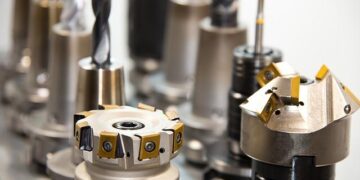Rethinking the Lifecycle of Silicone: Paving the Way for Sustainable Innovation
As environmental issues take center stage in today’s society, researchers and innovators are increasingly focusing on silicone, a versatile synthetic polymer integral to countless everyday items. From cooking tools to healthcare applications, silicone’s extensive use often overshadows the environmental challenges linked to its production and disposal. However, a pioneering study highlighted in a recent edition of Science, published by the American Association for the Advancement of Science (AAAS), aims to transform silicone’s lifecycle by tackling its ecological impact. This innovative strategy not only seeks to improve silicone’s sustainability but also underscores the urgent need for a circular economy within material science. Amidst growing concerns over plastic pollution, this reimagining of silicone could herald an era of environmentally friendly solutions that fundamentally change our approach to synthetic materials.
Sustainable Innovations in Silicone Manufacturing
Recent developments in sustainable manufacturing have opened doors for novel methods in producing silicone. Researchers are now prioritizing biobased feedstocks, which can significantly lessen dependence on conventional petrochemical resources. By harnessing renewable inputs like plant oils and organic waste, it is possible to substantially lower the carbon emissions associated with silicone production. This transition not only fosters environmental responsibility but also meets rising consumer expectations for eco-conscious products.
Additonally, businesses are beginning to adopt principles from the circular economy. The introduction of closed-loop systems facilitates recycling and repurposing of silicone materials throughout various stages of manufacturing. By investing in cutting-edge recycling technologies, companies can reclaim valuable raw materials from discarded silicone products—transforming potential pollutants into economic assets. This comprehensive strategy not only reduces waste but also ensures that silicone contributes positively toward a more sustainable future.
Recycling Silicone Waste into Valuable Assets
The field of environmental science is witnessing remarkable advancements that redefine our understanding of silicone waste. Once regarded as an indestructible pollutant, researchers are now discovering ways to convert this durable material into useful resources. Utilizing advanced chemical recycling methods such as depolymerization and pyrolysis allows scientists to break down silicones into their fundamental components—creating opportunities for reuse across various sectors including new product development, construction applications, and even energy generation.
The advantages associated with recycling silicon extend beyond mere waste management; they encompass significant reductions in carbon footprints while conserving natural resources as well. Some exciting prospects emerging from this research include:
- Sustainable construction materials: Recycled silicon can be transformed into eco-friendly building supplies.
- Cleansing energy sources:Pyrloysis processes can produce biofuels that contribute towards greener energy solutions.
- < strong>Diminished landfill contributions:Efficacious recycling strategies can reduce volumes entering landfills significantly.
Innovative Recycling Technologies Shaping Silicone’s Future
The latest breakthroughs in recycling technology are revolutionizing how we process silicones—setting us on course toward greater sustainability. Traditional methods often struggle with breaking down this widely used yet complex polymer; however innovative techniques such as chemical recycling and solvent-based approaches are being explored effectively deconstructing these products back into their original monomers . Not only does this minimize waste ,but it enables high-quality remanufacturing . Consequently ,companies increasingly embrace these technologies aiming at establishing closed-loop systems which mitigate ecological impacts .
Ahead lies promising research focused on developing new materials compatible with advanced recycling processes . Research teams investigate using bio-based alternatives that retain desirable properties while enhancing recyclability . Furthermore ,pilot programs emerge seeking standardize practices across industries creating scalable models adaptable by others sectors . Integrating machine learning algorithms for sorting categorization within facilities could greatly enhance efficiency accuracy further supporting shifts towards circular economies surrounding silicon products . Thus ,the future holds immense potential where innovation aligns seamlessly alongside sustainability within realms related specifically towards silicon recyclables .































